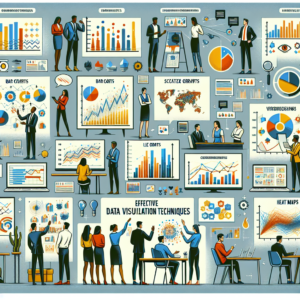===INTRO:===
When it comes to managing and interpreting data, choosing the right data analysis tools is essential. As data is being generated at an unprecedented rate, efficient and effective tools can help you identify patterns, draw insights, and drive decisions. This article aims to guide you on how to choose the right data analysis tools for your needs, considering factors such as your individual requirements, the different tools available, and how to match these tools to your specific needs.
Understanding Your Data Analysis Needs
Before embarking on a search for the right data analysis tools, it’s vital you first understand your data analysis needs. What kind of data will you be dealing with? How often will it be collected, and in what volume? Answers to these questions will determine the kind of tool you need. For example, if you’re dealing with large volumes of real-time data, you’ll need software capable of handling Big Data such as Apache Hadoop.
The next step is to consider the tasks you’ll be performing. Will you be cleaning data, visualizing data, or performing predictive analytics? Different tasks require different tools. For instance, Tableau is excellent for data visualization, while Python and R are popular choices for data cleaning and predictive analytics.
Lastly, consider your technical skills. Some data analysis tools require a steep learning curve and advanced programming skills, while others have user-friendly interfaces and require minimal technical knowledge. Keep this in mind when choosing a tool that fits your skill set.
Exploring Various Data Analysis Tools
Once you have a clear understanding of your data analysis needs, you can begin exploring various data analysis tools. There’s a wide range of tools available, each with its strengths and weaknesses. For instance, Excel is a simple and widely used tool for basic data analysis and visualization. However, it might not be the best choice for handling large datasets or performing complex operations.
On the other hand, more advanced tools like SAS and SPSS offer sophisticated data management, statistical analysis, and predictive analytics capabilities. However, these tools often require a higher degree of technical expertise.
Open-source tools such as Pandas for Python offer flexibility and customization, but may require considerable programming skills. Remember to consider factors like cost, scalability, ease of use, and community support when exploring different tools.
Matching Tools to Your Specific Requirements
Once you’ve explored your options, it’s time to match the right data analysis tools to your specific requirements. First, compare the tools based on how well they can handle your data needs. For example, if you’re dealing with large volumes of data, tools designed for Big Data such as Apache Spark might be more fitting than Excel.
Next, consider the tasks you’ll be performing. If your primary task is data visualization, a tool like Tableau might be more effective than a general-purpose tool like Python.
Finally, consider your technical proficiency. If you’re comfortable with programming, you might opt for Python or R. For those less technically inclined, a tool with a user-friendly interface like Excel or Tableau might be more suitable.
Summary: Making the Best Choice for Your Data Analysis
In conclusion, choosing the right data analysis tools boils down to understanding your data needs, exploring various tools, and matching those tools to your specific requirements. Each tool has its own unique strengths and weaknesses, so it’s important to weigh these against your own needs and skills.
Remember that the right tool isn’t necessarily the most advanced or popular—it’s the one that best fits your needs, capabilities, and budget. With the right tool in hand, you’ll be well on your way to unlocking valuable insights from your data and making data-driven decisions.
===OUTRO:===
Choosing the right data analysis tools is a crucial step towards harnessing the power of data. The journey may seem daunting, but with a clear understanding of your needs and a careful exploration of your options, you’re sure to find the tools that will serve you best. Remember, the goal isn’t just to handle data—it’s to uncover the valuable insights and opportunities hidden within it. Elevate your data journey; equip yourself with the right tools, and the possibilities are boundless!











